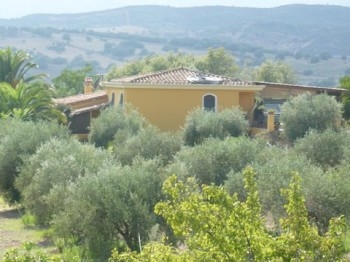 Lido di Cea Holiday Apartment
Lido di Cea Holiday Apartment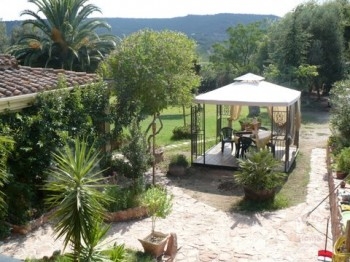 Lido di Cea Holiday Apartment
Lido di Cea Holiday Apartment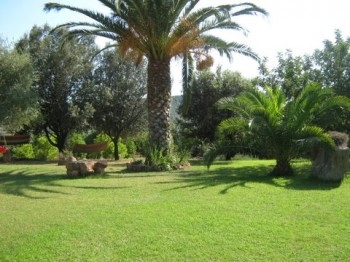 Lido di Cea Holiday Apartment
Lido di Cea Holiday Apartment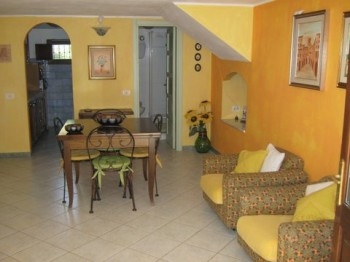 Lido di Cea Holiday Apartment
Lido di Cea Holiday Apartment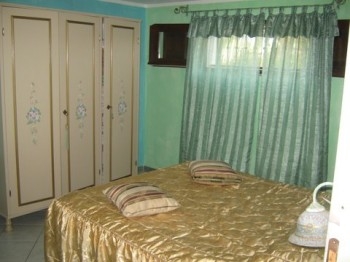 Lido di Cea Holiday Apartment
Lido di Cea Holiday Apartment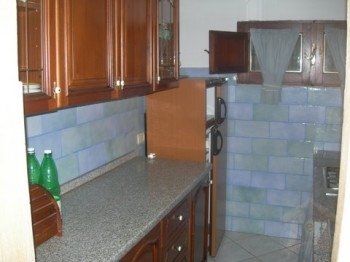 Lido di Cea Holiday Apartment
Lido di Cea Holiday Apartment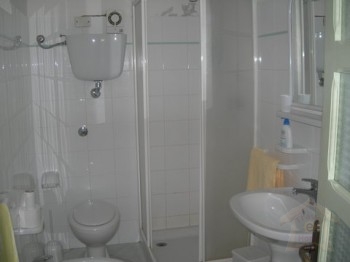 Lido di Cea Holiday Apartment
Lido di Cea Holiday Apartment Lido di Cea Holiday Apartment
Lido di Cea Holiday Apartment Lido di Cea Holiday Apartment
Lido di Cea Holiday Apartment Lido di Cea Holiday Apartment
Lido di Cea Holiday Apartment Lido di Cea Holiday Apartment
Lido di Cea Holiday Apartment Lido di Cea Holiday Apartment
Lido di Cea Holiday Apartment Lido di Cea Holiday Apartment
Lido di Cea Holiday Apartment Lido di Cea Holiday Apartment
Lido di Cea Holiday Apartment
 Type: Apartment
Type: ApartmentLido Di Cea Holiday Apartment is ideal for those who wish to be located just steps to beach access at an affordable cost. There is no better place than Sardinia for fun in the sun.
Offering cedar wood interior siding and roofs, plus fully equipped, this vacation rental sleeps up to five people, provides two bedrooms, one bath, a large living room with adjacent dining area and kitchen, plus a huge upper level deck with ocean view. Living room has a TV, VCR player, Wi-Fi internet service, and fold out sofa, coffee table, end tables and single overstuffed chairs.
Kitchen has a burner gas stove and refrigerator and is fully equipped with pots, pans, utensils, dishes, paper towels etc.
From your apartment you can walk to most activities in town and on the beach. Step out to enjoy a wander on the new city beach boardwalk that looks at beach, dunes and butterfly groves.
Enjoy beach kayaking, surfing, body surfing, volley ball, swings, slides, swimming, horseback riding on the beach.
Rates vary based upon the season and special rates implement for holidays and special dates.
This is the best location and best rental in Lido Di Cea!
Dear People, My name is Gianni Franceschi, born in Lanusei Sardinia. At the age of 18 years I came to The Netherlands where since 1976 I\'m working for The Dow Chemical Company in Terneuzen. Beside my own job, I began renting some houses of family and good friends of mine. The owner on place, will welcome you with open arms. Though, I do have all the responsibility for a smooth and proper running of your vacation and as intermediary \'tween you and the owner of the property.
Payment Terms: Within 7 days after receiving our confirmation on your booking request you have to pay 30% of the total rent deposit. On arrival at your vacation home, the balance due has to be paid to the owner.
Cancellation: Cancellation 9 months to three weeks time before arriving 30% of the total rent payable. If canceled less than the above term is 45% of the total rent payable.
Regarding a withdrawal of your booking in case of serious illness, we can make an agreement that 15% of the total amount will be paid from your side. Although when demonstrable with an authentic and signed medical certificate (no copies), which can be sent to us for further verification.
Lido di Cea: A sandy seabed with limpid waters and a coast where dazzling coves suddenly appear to break the long white stretches of sand and reefs, pebbles and red porphyry sketch a gorgeous landscape, variegated, rugged and uncontaminated. Cea is also a favourite seaside resort for windsurfers because of the strong sirocco winds blowing at 10-15 knots.As in the past, and thanks to the fertile land of the plain, agriculture continues to play a major role in the local economy. Discovering its delights won�t be a problem: oranges, peaches, grapes ( and therefore wines), honey, cheese, (casu �e fitta, casu agedu) and a savoury, scented, yet delicate milk. Ogliastra, a fairly recent discovery with its beautiful coasts and mountainous interior. Its territory, wedged between sea and mountain, offers a vast array of unique landscapes.A paradise of remarkable beauty situated along the eastern side of Sardinia, where nature is at its best. Some people think that the name Ogliastra derives from the wild olive trees growing in great numbers in the region, but more credited sources link it to the Agugliastra, a huge monolith overlooking the sea. The Ogliastra coasts are splendid oases set between sea and rock, rugged nature to dazzle us with some of the most fascinating marine landscapes of the Mediterranean. Leaving from the north we encounter the renowned coves of Cala Luna, Cala Sisine, Cala Mariolu and Cala Goloritzé, accessible only by boat or on foot; further south there are the beautiful beaches of Tancau, Girasole, Orrì, Cea ,Barisardo, Cardedu, Coccorrocci and the gulf of Sarrala.Enchanting, too is the landscape that climbs up the hills as far as the Gennargentu mountains, indulging the eyes with scenarios of rare beauty. Ogliastra is a land that must be relished slowly, it deserves more than just the hurried glance of conventional tourism. The entire territory is scattered with archaeological monuments, well-worth visiting: Nuraghi, Domus de Janas, Fonti Sacre, Tombe dei Giganti and Menhir.
It\'s not easy to describe in just a few words, what the Island, especially its interior, is able to convey to its visitors. In fact, the majority of tourists is familiar with and visits the Sardinian coasts, for the most part, during the hot summer months when organising something different from a day at the beach is almost impossible. A mountain bike excursion in fall or spring, thanks to its favourable climatic conditions, represents an interesting opportunity especially for those who have never visited Sardinia\'s interior regions. The paths, often on gravel roads, present various levels of difficulty; even beginners can enjoy taking on the challenge. Obviously, as always in these cases, safety requires the use of appropriate clothing and gear, fitting for both the type of course and the season. For those who decide to put themselves to the test mountain biking, a good supply of water (especially in the summer) and a helmet are certainly necessary� but not enough! Before your departure, it\'s important to check your breaks, make sure to have a local map, a compass and a small tire repair kit in case you blow a wheel. Follow these few basic but important rules and you\'ll be ready to begin your excursion on one of many routes found in the 10.000 square m of Sardinian forest. In Sardinia, mountain biking has become increasingly popular for two reasons; the need to exert outdoor sporting activities and the possibility to access otherwise inaccessible areas, if not on foot. Different facilities on the Island have therefor organised and offer both guided tours or simply the chance to rent the necessary equipment, allowing do-it-yourself hikers with the desire for adventure to follow inaccessible but enjoyable paths. Even those who haven\'t gone bike-riding since they were kids will have fun. Treasure Island! Why is it that who finds a friend, finds a treasure? Sardinia is a land of people who have had hospitality in their hearts for thousands of years. Its guests are always spoiled, as if they were good friends. The Hospitality Section lists the best local accommodations and facilities, always efficient and modern, available to tourists in search of holidays and new experiences. Among their distinct characteristics is the staff�s exquisite professionalism which allows you to establish friendly relationships with them, putting you at your ease while letting you make use of the numerous facilities and entertainment available. The possible choices include Residence Hotels, farm holidays, Bed & Breakfasts, camping and much more.
The term that best suits Sardinia is perhaps �environments�. What in fact strikes the visitor most is the coexistence of different territories, each with its own geological aspect. You can choose among many experiences to discover the peculiarities of the Sardinian environment: pleasant outdoor excursions in the woods and pine forests in national parks or scattered on the island are only a few examples. If you are passionate or curious about the secrets of the underground, Sardinia is rich in caves and mines in part recovered and turned into museums to be admired. This land has often suffered from drought but has many unexpected water resources: you will find beneficial hot springs as spas and waterfalls and fresh mountain springs.
Airplane and ferry-boats are the only transport connecting Sardinia to the rest of the world. Three airports (Cagliari-Elmas, Alghero-Fertilia and Olbia-Costa Smeralda) and six ports (Cagliari, Arbatax, Olbia, Golfo Aranci, Palau and Porto Torres) guarantee easy movements. Moreover, people who want to reach the Island with a private boat, can land in one of the tourist ports that we indicate apart. The internal movements are guaranteed from private and publics transport beyond car rental. Like all the islands of the Mediterranean Sea, Sardinia enjoys a mild climate that allows for the most part of the year to enjoy excursions and to appreciate the astonishing beauties of a still pure nature. The wind blows all year round (the main wind are mistral, sirocco, and south west and sometimes north-east) changing and refreshing the air even in the biggest cities which have a higher risk of atmospheric pollution. The yearly average temperature is 18 degrees centigrade. In Summer temperatures can reach 38 degrees and in Winter less than 0 degrees but only in the inner and mountain areas. Although Sardinia does not have much rain the past years snow and rain have refilled the basin and there in no longer lack of water.
The Trenino Verde of the Sardinian railways is one of the most suitable means of transport for who wants to know the most wild and fascinating areas of the island, even if it is not always possible to travel on the old carriages and to admire the steam locomotive. The Trenino Verde was established in 1985 and till now it has tranported hundreds thousands tourists from all around the world. With reservation it is possible to ask for the steam locomotiveand the period carriage fully in wood: speed lowers but a throw-back to the past can be very agreeable. The Sardinian railways, which manages more than 600 kilometers of railway lines (for the pubblic local transport and for the touristc lines), have preserved in good condition stations and crossing keeper boxes too: soon in some of these sites will stand some museums, thanks to the Autonomous Region of Sardinia. The great English writer David Herbert Lawrence, who visited the village of Mandas in 1921 and told his journey in Sardinia, in his book �Sea and Sardinia� declared: �doesn\'t matter where the train goes. The important is to decide to take it�. A spirit that to someone could maybe seem extravagantly adventurous, but which Engedras wants to embrace accosting it to a series of cultural and eating-and-drinking events in every province of Sardinia. Four are the legs, which cross the island: the longest one, is maybe the most beautiful as well, it is the Mandas-Arbatax. However, also the Macomer-Bosa, the Isili-Sorgono and the Nulvi-Palau legs are of a great emotional impact, they permit to discover some of the most fascinating areas of Sardinia weather in the heartland or on the sea.
From Cala Gonone to Lido di Cea. Embarking and disembarking: for those of you who do not want to take the windy but beautiful eastern coastal road it is quicker to fork off the main Carlo Felice road to Abbasanta-Nuoro and at Nuoro go towards Dorgali the main town of the Barbagia region. From there the tourist resort of Cala Gonone is only a short way away. When you reach Dorgali follow the SS 125 road south beside Monte Bardia which protects the country from the winds of the Tirreno Sea. This mountain is pierced by a tunnel on its eastern side and at the foot of this tunnel you will find the littie port of Cala Gonone. Leave your pick-up car at Santa Maria Navarrese, a town in Ogliastra famous for its colossal hundred-year-old olive trees, amongst the oldest in Europe, and for its little church built at the queen of Navarra\'s request during the long, unhappy Iberian domination as she had been saved from being sbip\'vrecked. Camping: free camping should be a canoeist\'s prerogative but be extra specially careful not to leave any trace of your stay. For those wanting more comfort the Cala Sisine campsite is wonderfully hidden amongst oleander trees, so much so that it is difficult to find unless you know where to look for it. Precautions: the excursion finished in one day is for the very fit and well-trained canoeist. We recommend that others attempt the route in stages; this way you can also appreciate more fully the true beauty of your surroundings. Pay attention to weather forecasts and postpone the trip if they predict strong easterly winds especially in winter. The coming and going of motorized dinghies in summer often driven by inexperienced people means you have to pay particular attention.
The nuraghic civilization began developping in Sardinia around the XVIII century B.C., during the Bronze Age. It takes the name from the nuragh, the typical tower construction, which characterized our island. Beyond the megalithic constructions and the many finds found in the whole island, of that period there aren\'t traces of writings. We don\'t know how they communicated but certainly they knew how to work very good metals metals, particularly the bronze. Many are the artefacts found in the archaeological sites, mostly of them tresured in the most important museums of Sardinia: the most famous are the small bronzes, little statues representing deities or monstrous beings, the most important personalities of single tribes, warriors, men and women, who offer gifts to divinities to thanks them for having granted their whishes or asking them help in some particular situations; various are also the examples of animals or wherries, these last ones have been used as lanterns. Back around the half of the III millennium B.C., the Sardinian people felt the necessity of building villages in commanding positions, for example on the top of hills, from which they could control the surrounding area. With the passage of time, boundary walls and watch-towers were erected. The following step was that of the nuragh, which, at first, didn\'t have its mostly known shape, that of the tower �a tholos�: It was squater and lower, devoid of central rooms and subdivided in passages, but it was also ampler. The universally known nuragh is that �a tholos�, which appeared around the XVI century B.C. : it\'s a megalithic construction realized with courses of square blocks (overlapping without the use of cementic substances), which get smaller from the basement to the top. Nuraghs have the shape of truncated cones, whose function has not been accuracy discovered yet: at the biginning it was thought that thy had a simple function of defence, but some scholars have remembered that, in that period the foreign peoples weren\'t already arrived in Sardinia. It is thought that they were used for distinguishing and bordering the areas of the different tribes or federation of tribes: in the principal towers met leaders and priests, and the rooms next door were adapted to a religious use. In Sardinia there are about 7.000 censused nuraghs, partly to bring to light, they are still recovered of earth, detritus and vagetation. From a simple tower, in some localities, they passed to the more elaborated structures, with a central tower (called stronghold) connected with other towers ( lobi), all surrounded with high defence walls. Generally, the aperture on the top was closed with a slab of rock. In many cases it was possible to gain access to the top from inside, through heilicodal stairs made with square blocks. Outside there were woody stairs or appropriate grooves between the walls. Sometimes secondary rooms were reached through tunnels. The most massive nuraghs were built on three levels: that is the reason why they reached also 20 meters of high.
February to November.
Italian.
Mentioned rates are meant for two to four persons. An additional fifth person han an extra charge to pay of €35 per week.
Endcleaning fee is €50.
Included all linen and the energy costs.
$0.00 / Night

